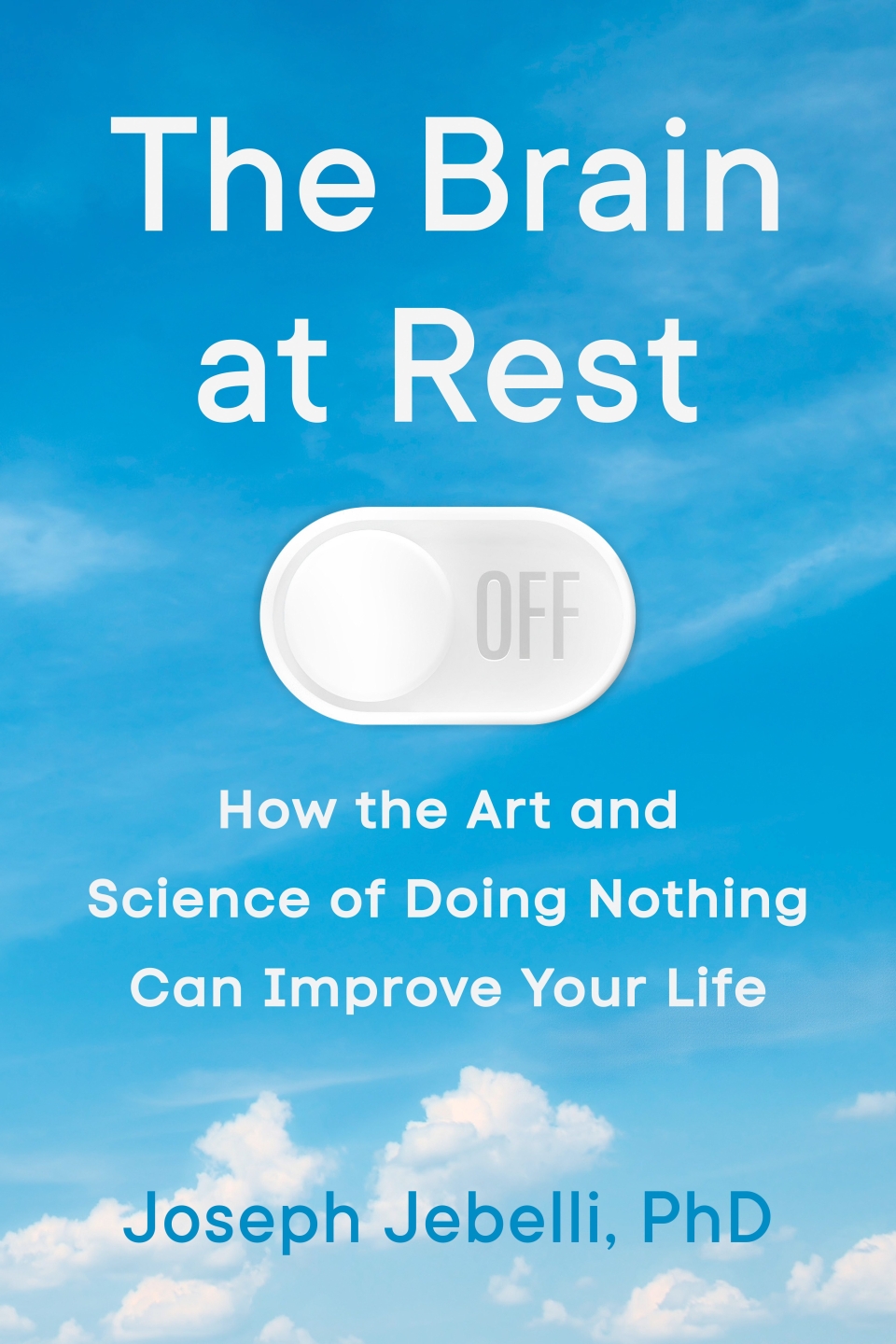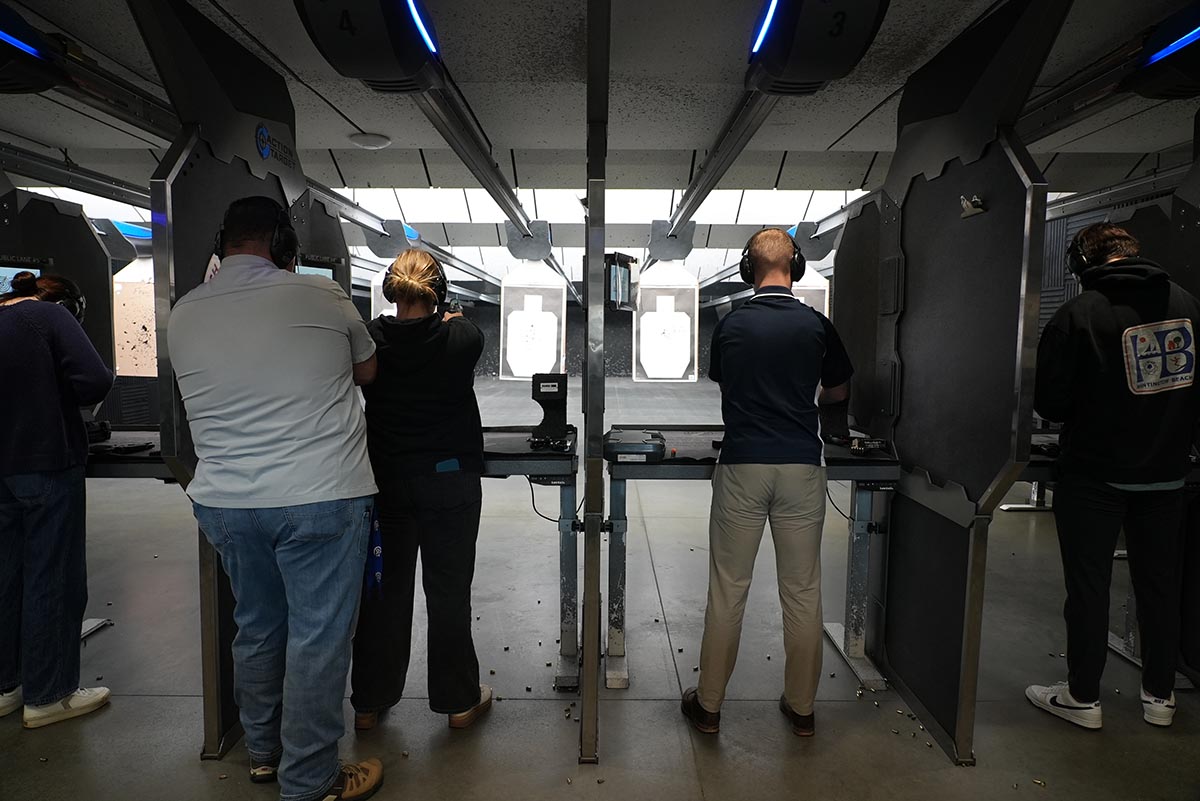
New Hampshire’s arts and culture organizations are confronting an uncertain future as state and federal funding cuts drain budgets. From museums and regional theaters to community arts projects, leaders across the state are voicing concern not just for the survival and maintenance of their organizations, but for the communities they serve.
A central focus of these cuts are organizations and projects focused on diversity, equity and inclusion. Cuts or delays in grants from the National Endowment for the Arts (NEA), National Endowment for the Humanities, and the Institute for Museum and Library Services have already affected operations, programming, and planning for several organizations in the Granite State. This ideological shift has cast a chilling effect on federal grantmaking, particularly for programs that prioritize inclusive storytelling, cultural equity, or underrepresented communities.
At the state level, legislators significantly reduced the NH State Council on the Arts budget in June. The initial House version of the budget proposed eliminating the Art Council entirely, but the Senate restored some funding while also proposing that it operate as a volunteer entity funded solely through private donations and tax credits. The final budget included $150,000 in direct funding for the council, which will cover the cost of one staff member, along with business enterprise tax credits in exchange for private donations. The Arts Council, which is under the purview of the Arts Division of the NH Department of Natural and Cultural Resources, funded $1.5 million to 180 grantees in more than 60 communities in FY24 and had received up to $2 million in federal funding matches in previous years, according to About Arts4NH, which advocates for the arts in NH.
The NH State Council on the Arts is a state agency that aims to stimulate economic growth through investing in the arts. It is also tasked with making art accessible to underserved populations and preserving heritage arts, two goals that come into the crosshairs of a political environment opposed to diversity, equity and inclusion efforts.
Commenting on the budget cuts, NH Commissioner of Natural and Cultural Resources, Sarah Stewart, told WMUR in July: “This means New Hampshire is ranked 56th in terms of public support for the arts behind every state, the district of Columbia and five territories,” she said.
Jessica Iris, executive director of Arts Alive in the Monadnock Region, a nonprofit supporting a network of artists and nonprofits, calls cuts to the state’s art council “confounding.”
“We rely on that team [at the State Arts Council] to keep us connected and resourced. That includes job opportunities being shared, gig opportunities for musicians and artists. It’s such an important piece to have that centralized hub,” Iris says. “There will also be a loss of federal matching funds and there’s going to be a significant loss of the staff from seven down to one. That means a loss of that statewide network and knowledge
and expertise.”
Other changes to the arts and culture landscape include the closure in May of the NH Business Committee for the Arts (NHBCA). While the closure marked another blow to the infrastructure supporting the state’s arts and culture institutions, it was unrelated to state and federal efforts aimed at reducing arts funding.
NHBCA had long served as a bridge between the business and arts sectors. For 41 years, NHBCA funded and helped create many projects in dance, theater, visual arts and music. The highest-profile event was its annual gala that honored people and businesses for their generosity and ingenuity in supporting the arts.
Tom Raffio, former chair of the NHBCA and president and CEO of Northeast Delta Dental, says the decision to sunset the group came because it had met its mission of forging strong ties between the business and arts communities. “Businesses now get the importance of the arts and donate directly to theaters and galleries,” he says. Still, he acknowledged the loss comes at a tough time. “Unfortunately, the timing of our sunset coincides with state budget cuts on the arts, but they were unrelated.”
Uncertainty Deepens
Arts and culture organizations are used to uncertainty as their budgets are heavily dependent on grants and other contributed sources of income.
Americans for the Arts reported that in 2020, arts and cultural nonprofits received 60% of their revenue from earned income, which includes fundraising, ticket sales, investment income and sponsorships. The remaining amount was split between private sector contributions (30%) and government funding (10%).
Many arts organizations that were already struggling faced dire circumstances during the pandemic when venues shut down and income dramatically decreased. However, public funding for the arts rebounded in 2022 and 2023 due to an influx of federal relief packages, according to Grantmakers in the Arts. But with that funding gone and federal and state governments cutting funding, arts organizations are again scrambling to survive.
The NH Charitable Foundation awarded more than $3.2 million in grants to 138 nonprofit organizations through its 2024 Community Grants program including several arts and culture organizations. Those organizations received 11% of the grants, up from 10% in 2020, totaling nearly $8 million. The median grant amount for arts and culture projects nationally in 2021 was $35,000 according to Foundation Search, which provides funding information. Overall, arts, culture and humanities organizations in the U.S. received $25.3 billion from independent donors, corporate sponsors and grants in 2024, according to Giving USA.
According to Candid, Foundation funding, which was stable between 2022 and 2023, declined 25% in 2024, falling below pre-pandemic levels. Giving from individuals, board members, and corporations also declined from 2023 to 2024 and are now also at or below 2019 levels.
While funding cuts and economic downturns are nothing new to the arts and culture sector, today’s political climate is creating broad uncertainties as the sector is still recovering from the hit it took during the COVID pandemic (See sidebar).
Uncertainty makes it harder to plan for future projects. Meghan Doherty, director of the Museum of the White Mountains, Plymouth State University’s teaching museum, says she was supposed to be notified in August about a federal grant from the Institute of Museum and Library Services that would cover costs to catalogue a portion of the museum’s collection. Now she doesn’t know if that organization will still be functioning.
In 2024, the Institute of Museum and Library Services awarded $266.7 million nationally through grants to libraries and museums. The Granite State has historically received between $1.3 million and $1.5 million for projects at libraries.
“And there are other grants as well,” Doherty says, adding that she was planning to file a grant application to the NH State Council on the Arts last winter. “I decided that there was so much uncertainty there that it wasn’t a good allocation of my time.”
Doherty says she’s now relying on her professional network and asking speakers to volunteer their time. “Normally, I try very hard to always pay our speakers an honorarium,” she says. “But right now, I’m asking everyone if they’ll donate their time because I just don’t know where our funding is going to come from for some projects.”
And that will threaten the museum’s ability to present exhibits with a deep benefit, such as a recent traveling Smithsonian exhibit that has sparked intergenerational dialogue around rural hopes and challenges, including calls for more affordable housing and improved transportation. Doherty sees this kind of programming as essential for strong communities.
“This is what the humanities do,” she says. “They allow space for imagination and storytelling that helps people find common ground.”
Delays, Denials
Nonprofits rely on numerous sources for their funding including grants, donations and fees for programs and services. Several organizations reported delays in grant decisions, or worse, outright cancellations.
Among them is Canterbury Shaker Village, a museum that preserves the heritage of the Canterbury Shakers with 25 restored original Shaker buildings and four reconstructed Shaker buildings. While Canterbury Shaker Village was awarded a $30,000 grant by the NH Charitable Foundation in 2024 for general operating support, it lost a grant from the National Endowment for the Humanities this year and fears its grant from the Institute of Museum and Library Services could be next, says Executive Director Erin Hammerstedt. “This has led to a lot of strategic scenario games and what ifs,” she says, explaining that Shaker Village’s fiscal year began March 31, and it had just budgeted for hiring two new maintenance positions. “We wanted to expand our staff but when we learned that the IMLS grant was likely going to be cut, we held off on hiring those positions because we have existing staff that is already doing grant funded work.”
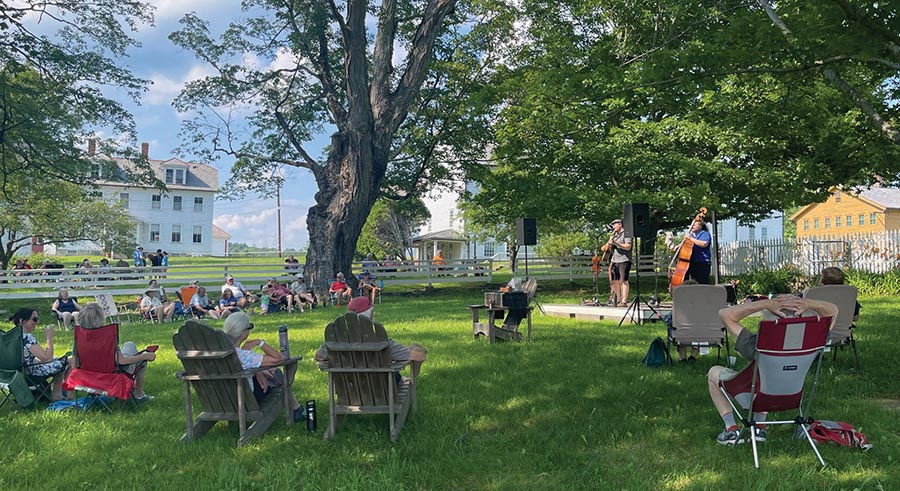
The Jordan Tirrell-Wysocki Trio played to a crowd of more than 100 at Canterbury Shaker Village as part of their free Music on the Green series. (Photo Courtesy of Canterbury Shaker Village)
These financial challenges potentially deprive visitors of the intangible benefits of visiting a museum. “Museums are highly trusted. They provide a high level of solidity and trust. There is a certain sense of peace and calm that people find here, and that’s particularly valuable right now with the world in such a state of instability,” Hammerstedt says.
Donations are also not always reliable. The Currier Museum of Art in Manchester, which depends primarily on philanthropic donations rather than state or federal grants to maintain operations, has taken hits. Director and CEO Jordana Pomeroy says the museum’s recent wellness program grant, aimed at supporting veterans, was denied—likely due to reductions at the Institute of Museum and Library Services. “This fits into a trend,” she says, emphasizing that losing these grants means more than lost dollars: “Without these kinds of grants, it’s more difficult to think forward for some organizations.” At the grassroots level, the consequences of cuts are compounding. Yasamin Safarzadeh, grant writer and special projects coordinator of Positive Street Art in Nashua, says the organization is facing a 15% budget shortfall due to cuts to the State Council on the Arts. Positive Street Art promotes urban art through murals, dance and community events. “Our main job should be to affect change and healing in the community,” she says. “Now we’re doubling down on administration and fundraising.”
Safarzadeh expressed frustration that the creative sector is being gutted despite its proven ability to revitalize communities. “Some of the logic in this isn’t logic to me,” she says, adding that some of the arts council money was used by Positive Street Art to create programming for vulnerable populations including unhoused people. “We’re a rare arts organization working with a diverse range of people: people with disabilities, those with substance use disorders, formerly incarcerated youth and homelessness. We’re pushing each other up and reinvesting.”
Ironically, the end of one arts organization is bringing more resources to Positive Street Art. As part of the dissolution process for the NH Business Committee for the Arts, the NH Charitable Trust Division requires the organization to choose another nonprofit to receive its remaining assets. The board of NH Business Committee for the Arts voted to give its remaining financial and physical assets, amounting to $4,000 and some leftover equipment, to Positive Street Art.
Arts Bring Economic Vitality
The economic footprint of the arts in NH is extensive. A 2024 study commissioned by the Northern Border Regional Commission found that for every new dollar generated by a NH museum, an additional 74 cents is generated elsewhere in the state economy. Each new museum job generates nearly half a job in another sector, and every dollar paid to museum staff generates another 80 cents in statewide wages.
The Monadnock Region’s nonprofit arts sector alone generated $25 million in economic activity in 2022, according to Arts Alive. That supported 521 jobs and generated $5.3 million in tax revenue. The arts sector attracted visitors from outside the region, and many indicated they would travel elsewhere if the local offerings disappeared, underscoring the role of the arts in keeping money and culture in the community.
“It’s hard to put a dollar amount to [the role of the arts in communities],” says Iris, executive director for Arts Alive. “You see it in things like the Keene Art Walk, the Magical Mystery Tour mural project, Keene Pride Festival, and the snow and ice festival. These are cornerstones that mark the seasons and bring people together.”
According to the Arts Action Fund, a nationwide nonprofit advocacy group, NH’s arts and culture for-profit and nonprofit sectors supported over 21,021 jobs and contributed more than $3.4 billion (3.4% of NH’s GDP) to the state economy in 2022. Yet the state ranks near the bottom nationally in public arts funding per capita, and recent political decisions have only exacerbated that imbalance.
Beyond the numbers lies a deeper value. For Brendon Fox, producing artistic director at the Peterborough Players, it’s about community. “Theater is an empathy machine,” Fox says. “It’s a place where people can sit in a dark room next to strangers and laugh together, gasp together, and maybe move the needle a little bit on their perspective.”
The Players contribute more than $1.6 million annually to the local economy, employing local artists, renting nearby properties, partnering with restaurants, auto dealerships and even buying lumber from local suppliers. But Fox emphasizes the intangible benefits as much as the financial ones. “We live in intense and somewhat fractious times,” he says. “People want to connect. They want to be better neighbors, better friends, and the theater allows them a chance to be together. I never get tired of advocating for the ‘why’ in [why come to the theater]. It allows people the chance to connect.”
Flexibility, Resilience
While some organizations remain stable, such as the Wright Museum in Wolfeboro, which relies almost entirely on earned income and donations, many others worry about increased competition for philanthropic dollars. “If people perceive there’s a bigger need, like food insecurity or addiction treatment, then arts and culture may fall down the list,” says Wright Museum Executive Director Peggy Hennelly-Maniates.
Pomeroy at the Currier stresses that once cultural institutions close, they don’t come back easily. “You can’t just put everything in mothballs for a few years,” she says. “If an institution can’t afford to keep its physical plant going, it can’t keep its collections going.”
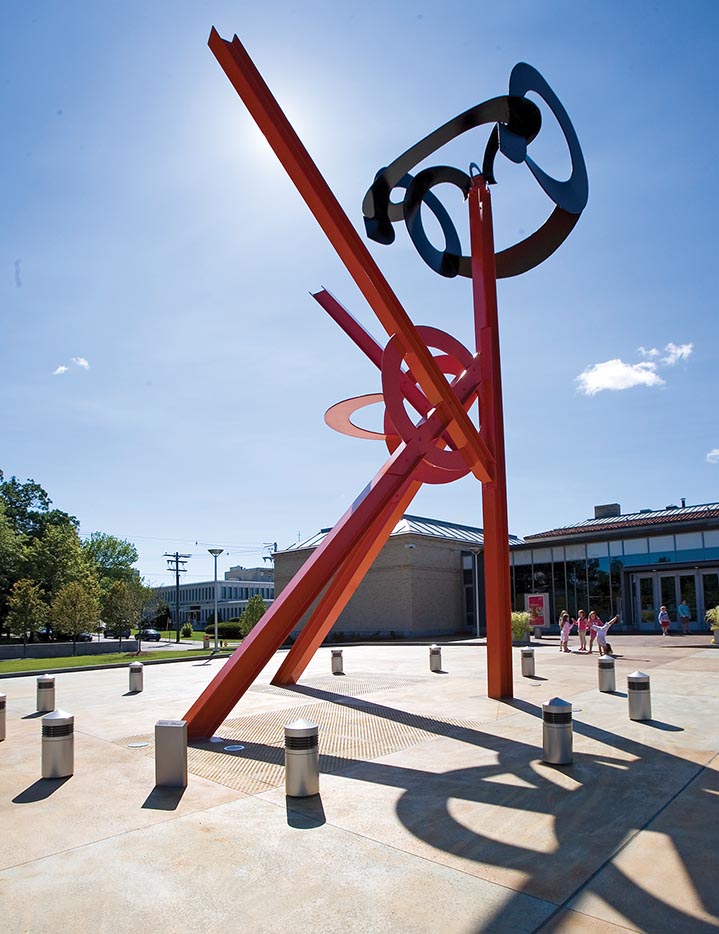
She also warns of the smaller costs that affect audiences. “You’ll probably see things show wear and tear. Institutions may close an extra day,” she says. “These changes cut into the mission, but sometimes there’s no other option.”
Despite the challenges, arts leaders across the state remain resilient. “Our job is to make the museum experience accessible and move away from the idea that they’re elite institutions,” says Pomeroy. “Art is for everyone.”
For Safarzadeh and others, the fight is about more than sustaining programs—it’s about making sure arts organizations continue serving as spaces of healing, inclusion, and transformation. “We’ve done it with a skeleton budget before, and still managed to keep our programing funded. We’ll keep going,” she says. “But this isn’t about just surviving. We want to thrive. We want to be valued.”



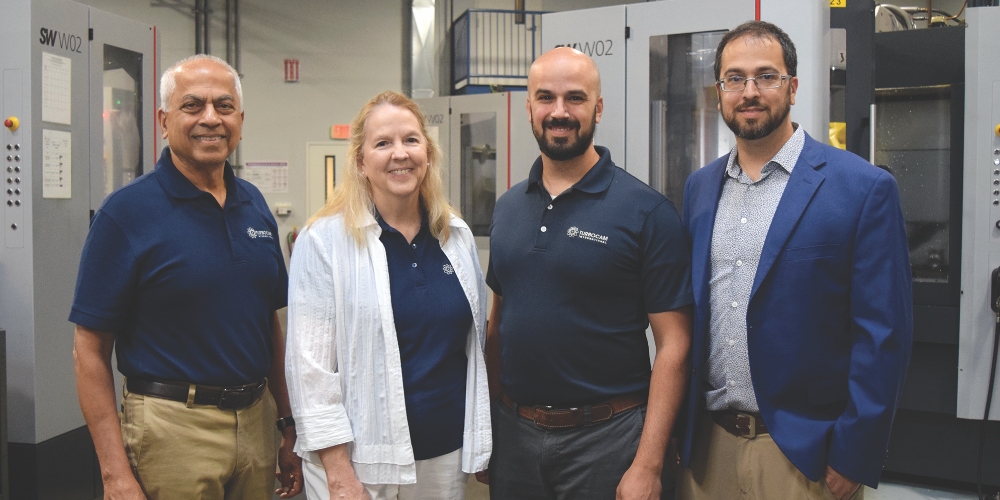
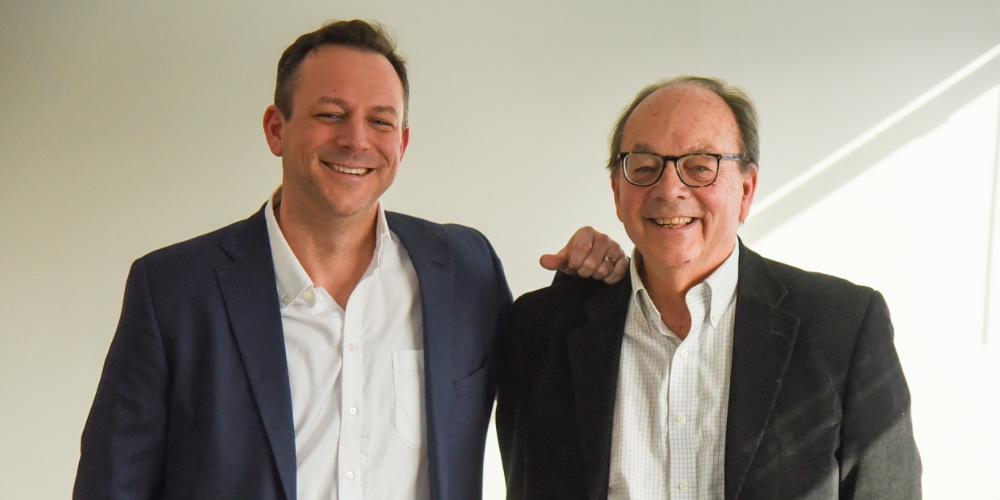

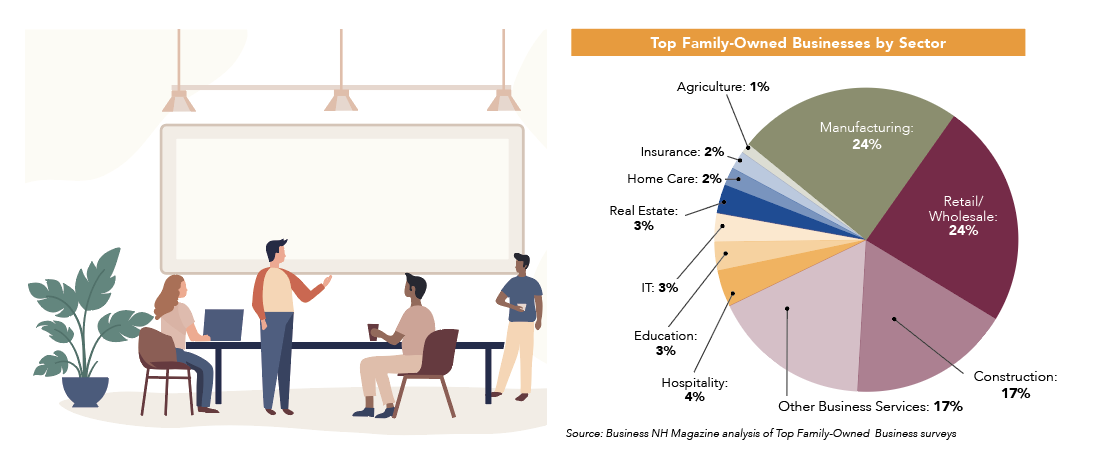





_Alex-and-Jason-in-front-of-map-sm.jpg)





